Learn how to make the best French Toast Sticks in less than 30 minutes with tender centers and coveted crisp, caramelized edges—no floppiness here! This recipe uses a thicker custard with the perfect egg ratio (never eggy or soggy!), infused with vanilla and nutmeg, then rolled in cinnamon and sugar. Read on for tons of tips, variations, dipping ideas, and how to prep ahead, making mornings a little easier and a lot tastier!


This French Toast Sticks Recipe is Perfect For Busy Mornings
This French Toast Sticks recipe is perfect for busy mornings because it delivers a quick, delicious, and satisfying breakfast that the whole family will love! These golden, cinnamon-sugar-coated sticks are easy to grab and dip, making them ideal for on-the-go or a quick sit-down meal. The recipe comes together in minutes with simple ingredients, or you can make the batter ahead or freeze the sticks and reheat for those extra-rushed days.

Why You’ll Love My Homemade French Toast Sticks
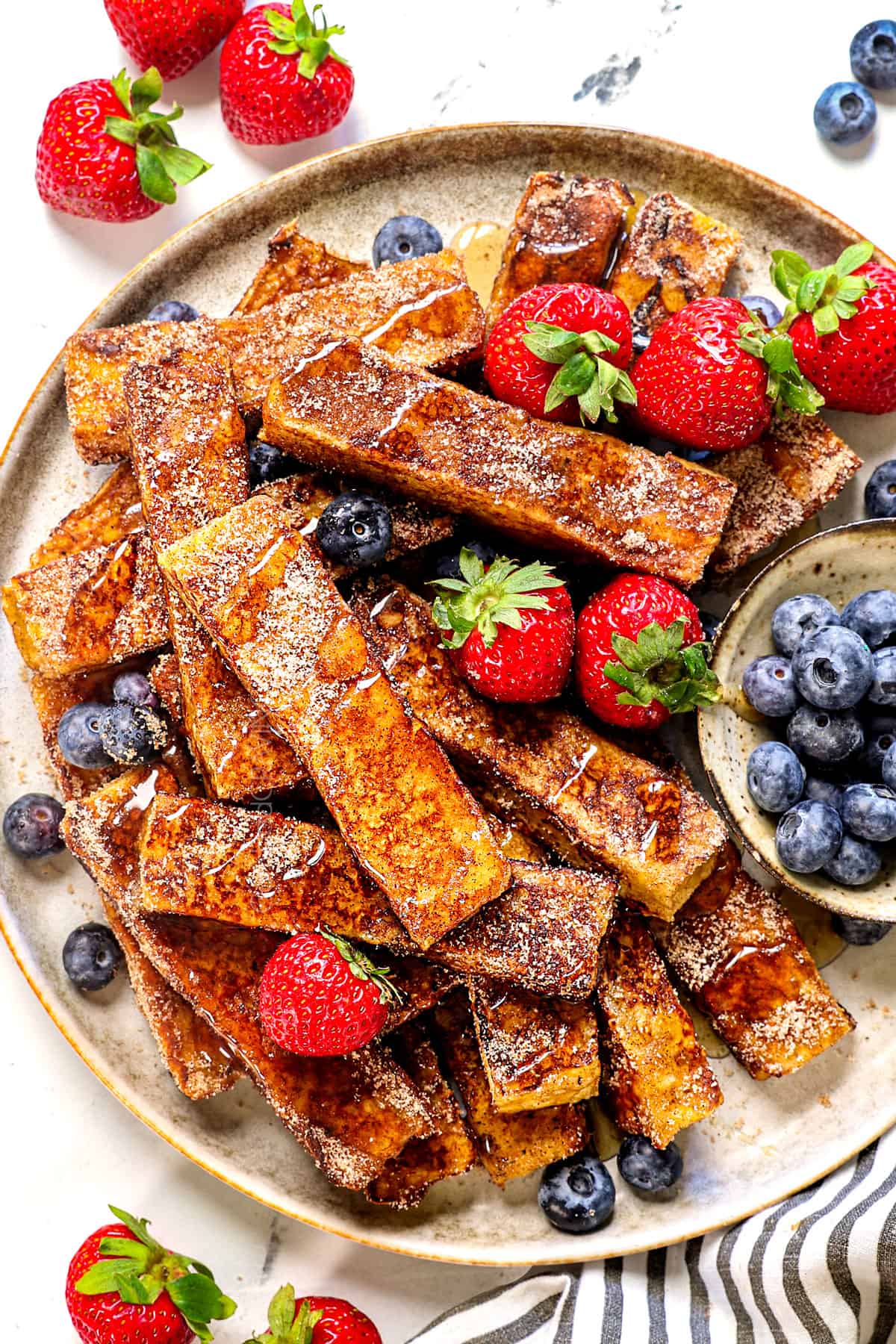

What you’ll need to make French Toast Sticks
Let’s take a closer look at what you’ll need to make this French Toast Sticks recipe (measurements in the printable recipe card at the bottom of the post):
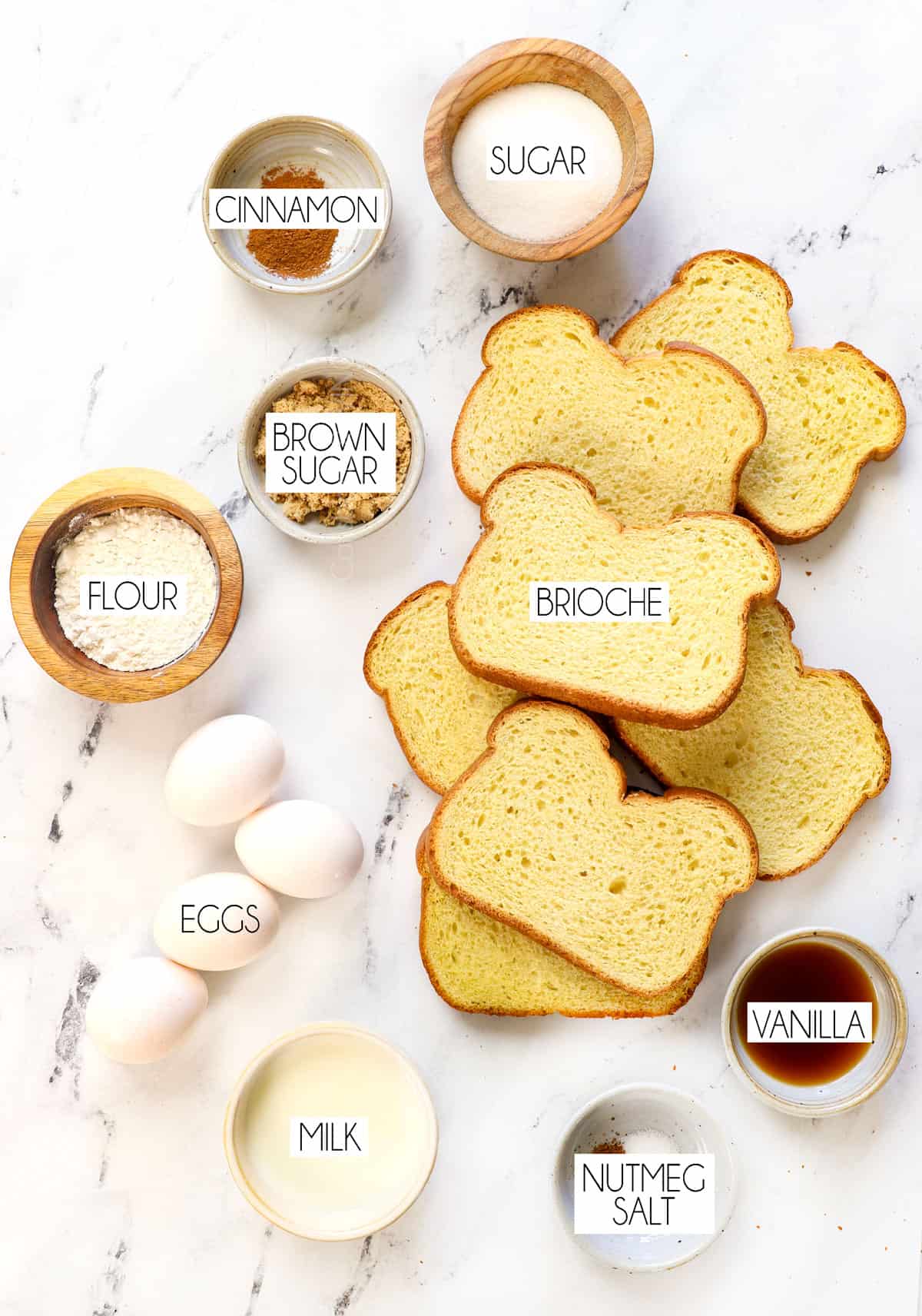

WHAT’S THE BEST BREAD FOR FRENCH TOAST Sticks?
Homemade French Toast Sticks should be fluffy and tender inside and crispy on the outside. Brioche and challah are the best for achieving this texture. Here’s the breakdown:
Brioche: Brioche is ideal for French toast due to its rich and buttery composition, adding a decadent sweet flavor. The high egg and butter content gives it structure to soak up the custard and cook up golden, soft, and pillowy with a delicate and tender crumb. Brioche can usually be found in the loaf in the bakery section and sometimes pre-sliced with the bread.
Challah: Challah is also an excellent choice for French toast due to its dense and slightly chewy texture, which absorbs the egg mixture without becoming too soggy. The rich composition of eggs and butter in challah adds a luxurious flavor. It’s not quite as sweet as brioche and is denser and drier. It’s still good, just not as good as Brioche. Challah will be located in the bakery section of your grocery store.
Gluten free bread: Whole Foods carries Canyon Bakehouse Gluten-Free Bread in the frozen section (thaw first) or on Amazon here. I have also heard good things about Udi’s Gluten Free Bread.

How to Make Fench Toast Sticks
Let’s take a closer look at how to make French Toast Sticks with step-by-step photos (full recipe in the printable recipe card at the bottom of the post):

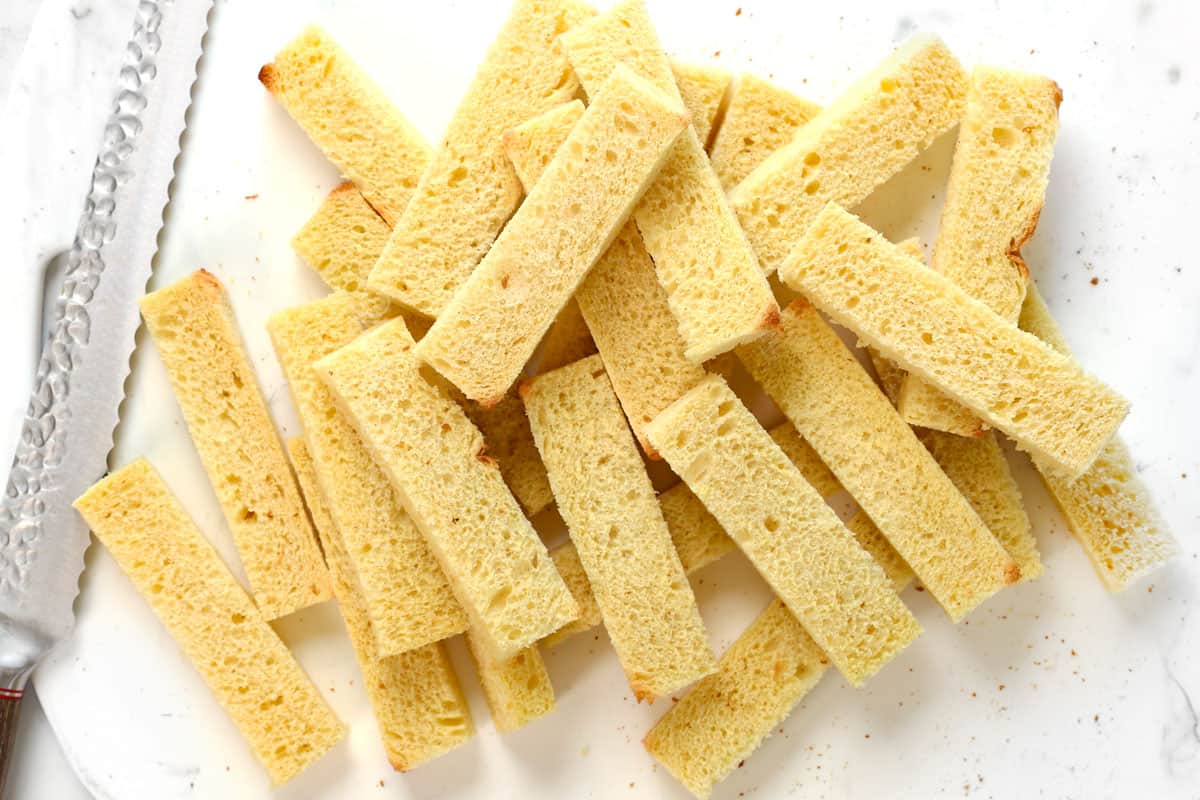


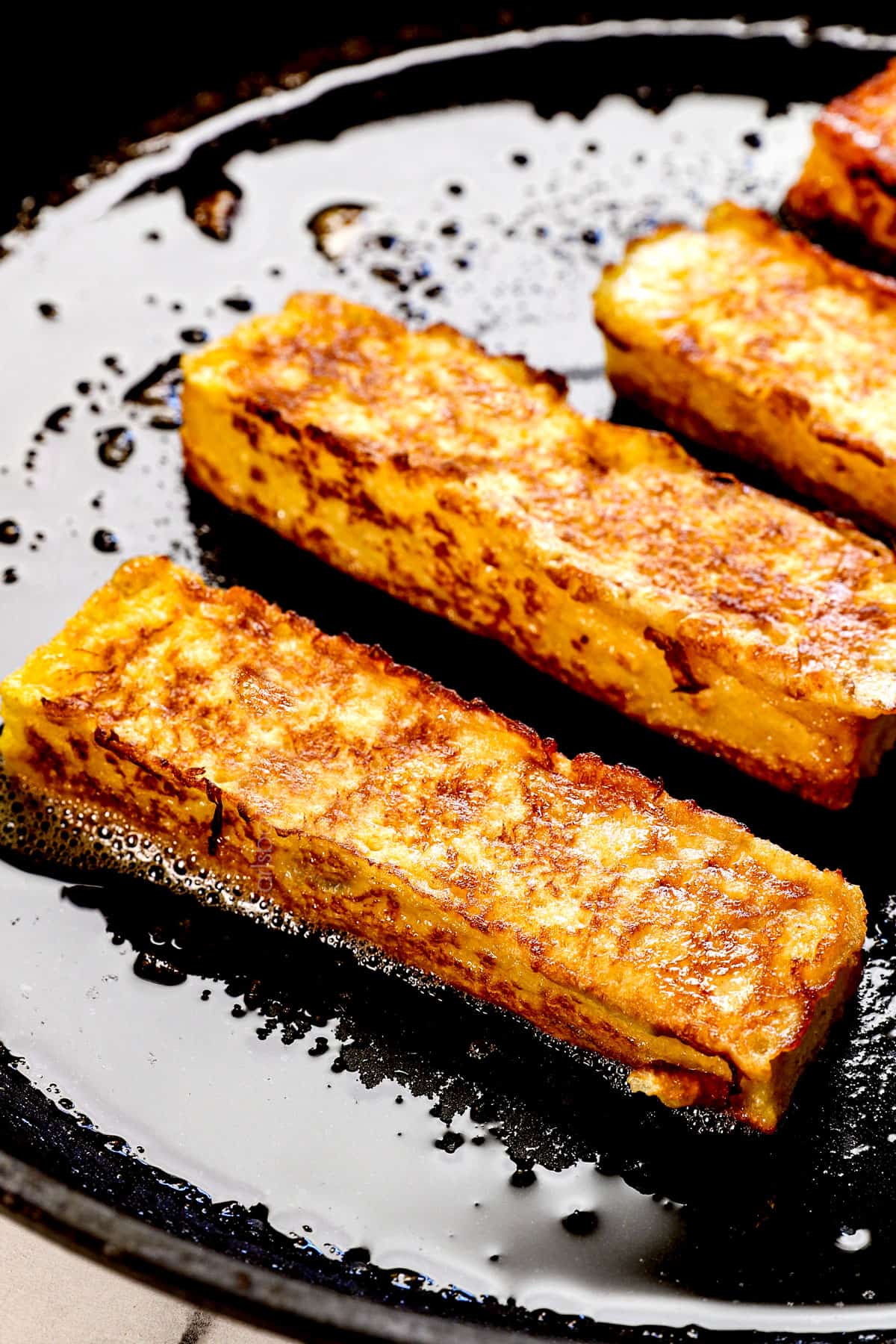

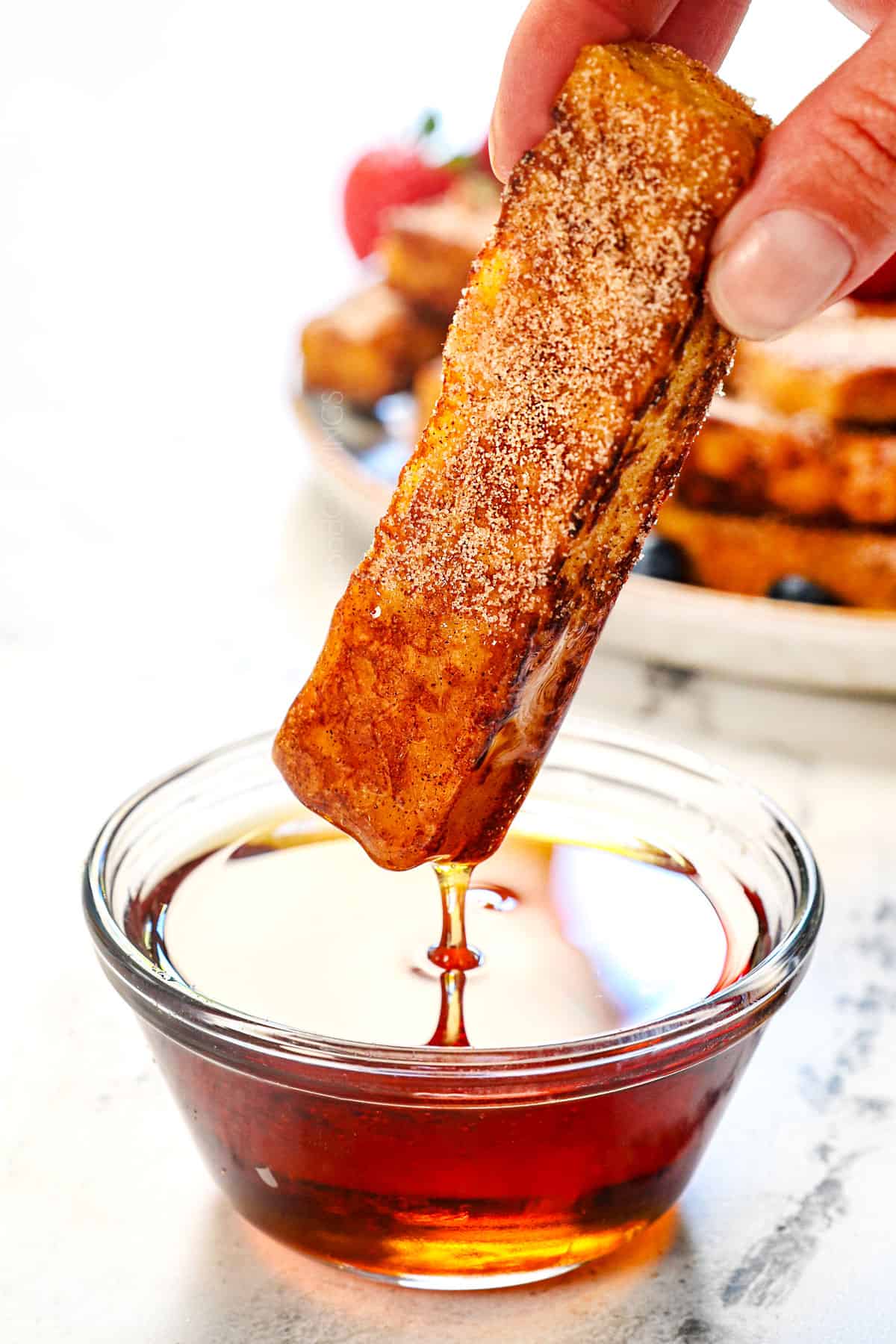
How Long to Cook French Toast Sticks in Air Fryer
French toast sticks take about 8-10 minutes to cook in an air fryer at 375°F (190°C). Flip them halfway through cooking to ensure both sides are golden and crispy! Adjust the time slightly based on your air fryer model for the best results.
How Long to Cook French Toast Sticks in Oven
Baking French Toast Sticks in the oven is not preferred because they will become less crispy. To bake French toast sticks in the oven, preheat your oven to 350°F (175°C), line a baking sheet with parchment paper, and lightly spray with cooking spray. Arrange the French toast sticks in a single layer on the sheet and bake them for 12-15 minutes, flipping them halfway through to ensure even cooking. Once golden brown and slightly crispy, broil them for a minute or two, but keep a close eye on them to avoid burning.

French Toast Stick Recipe Tips

MEal Prep French Toast Stick
You can make the batter up to 3 days ahead of time and refrigerate it until ready to use. You can also follow the below instructions for refrigerating, freezing, and reheating.


French Toast Stick variations

How to serve Homemade French Toast Sticks
This easy recipe is best served warm! Keep the sticks warm between batches by placing them on a baking rack placed in a baking sheet in an oven preheated to 200°F. When ready to serve, don’t stack; instead, transfer to individual plates or a large serving platter. See below for dunking ideas!
What to Serve with French Toast Stick
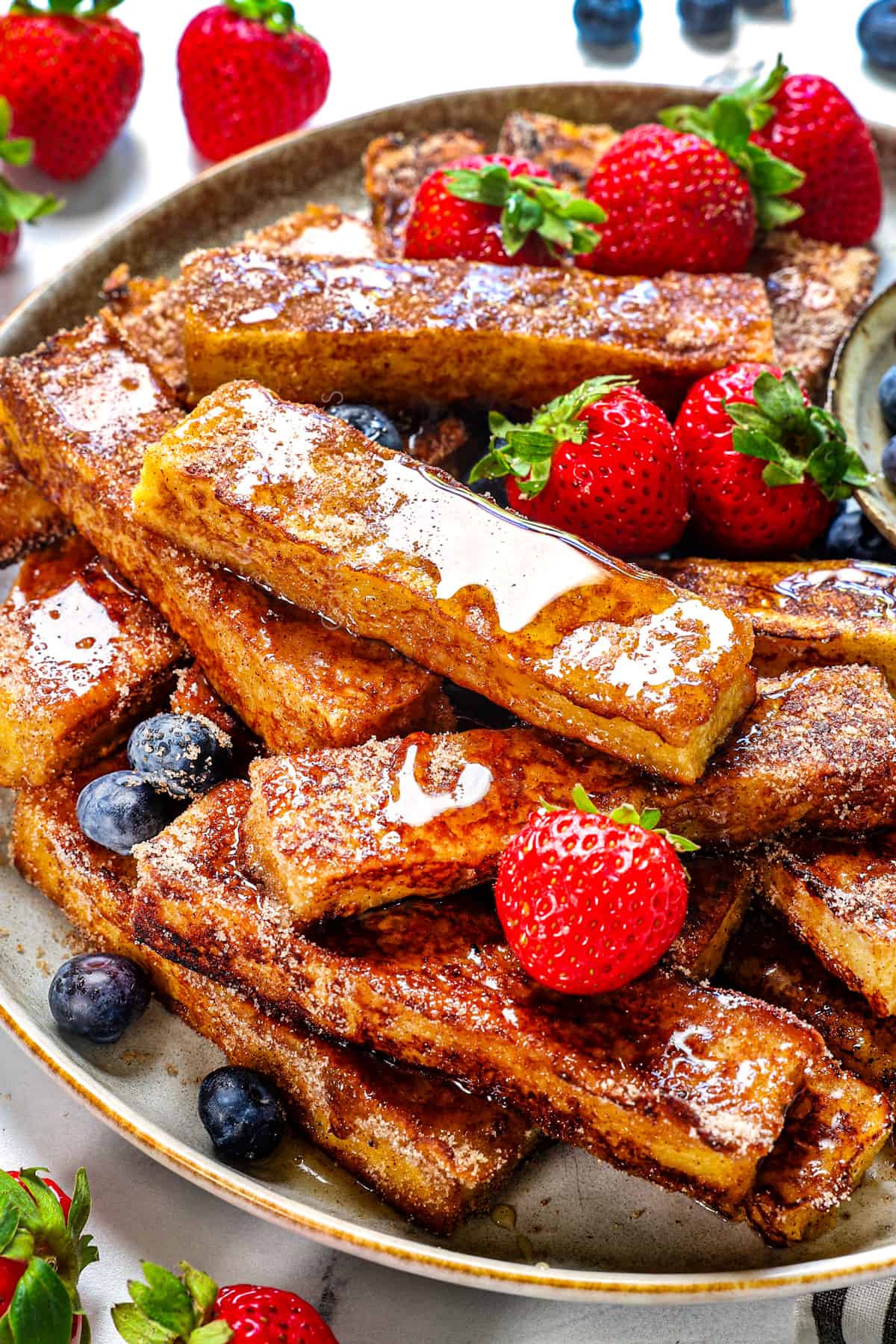

French Toast Stick Storage Tips
1. Cool Completely: Allow the cooked sticks to cool completely. This helps prevent condensation inside the storage container.
2. Add to Airtight Container: Separate and stack multiple slices with a piece of parchment paper between to help maintain texture.
3. Refrigerate: Store in the refrigerator for up to 4 days.
Freezing Homemade French Toast Sticks
Freezing this recipe is a convenient way to prepare it in advance for quick and easy breakfasts. Here’s a simple guide on how to freeze:
1. Cool: Allow the cooked sticks to cool completely for the best texture.
2. Flash Freeze: Arrange them on a baking sheet, ensuring they are not touching. Place the baking sheet in the freezer and “flash freeze” for 1-2 hours.
3. Package: Transfer to a freezer-safe bag, squeeze out excess air, label, and date.
4. Store: Freeze for up to 2 months.

How Long to Cook Frozen French Toast Sticks
To cook frozen French toast sticks, follow these guidelines based on your cooking method:
-Oven: Preheat your oven to 375°F (190°C) and bake them from frozen for 8-10 minutes, flipping them halfway through until golden and heated through.
-Air Fryer: Set the air fryer to 350°F (175°C) and cook them from frozen for 5-7 minutes, flipping them halfway for even crisping.
-Microwave: Heat them from frozen on a microwave-safe plate for 1-2 minutes, checking every 30 seconds for desired warmth.
Always ensure they’re cooked to your preferred level of crispiness!
French Toast Stick Recipe FAQs
French Toast got its name because although it likely originated in 17th-century England, it was popularized in France. It originally was known as “pain perdu” or “lost bread,” which involved soaking stale or leftover bread in a mixture of eggs and milk before frying it. The dish made its way to America, where it became known as French Toast, reflecting its French origins and influence.
Some say that the dish was named after the French chef who introduced it to America, while others speculate that it was named simply because it sounded fancy and exotic. So while French toast may have a French-sounding name, it is not actually French in origin.
French toast has ancient origins and is not exclusive to France. Its roots can be traced back to ancient times, with variations appearing in different cultures. The dish likely originated independently in multiple places. In the 4th or 5th century, the Romans had a similar dish called “aliter dulcia,” which involved soaking bread in a mixture of milk and eggs before frying. The term “French toast” itself became popular in 17th-century England and was later brought to America, where it evolved into the dish known today.
Yes, you can make French toast sticks without milk. Use alternatives like almond milk, soy milk or coconut milk, for the soaking mixture, depending on dietary preferences or restrictions.
To avoid soggy French toast sticks, make sure to use day-old or slightly dry bread. Don’t soak the bread in the egg mixture for too long, and cook the sticks over medium heat until golden brown on each side. Baking or air-frying after pan-frying can also help crisp them up.
Yes! Leaving bread out overnight can help it become slightly stale. This allows it to absorb the egg and milk mixture without becoming overly soggy, resulting in a better texture when cooked. If you don’t have stale bread, you can achieve a similar effect by toasting or baking fresh bread slices lightly before making French toast.
Adding flour to the egg mixture is the trick to making good French toast sticks. This creates a thicker and more stable coating, more like a batter, which prevents the bread from becoming soggy and contributes to a crispier texture when cooked. The flour adds structure to the batter, resulting in French toast sticks with a delightful balance of tenderness and crispiness.
The common mistake in making French toast sticks is over-soaking the bread in the egg and milk custard. If the bread absorbs too much liquid, it can become overly soggy and may not cook evenly. To avoid this, it’s crucial to briefly dip the bread into the mixture, ensuring it’s coated but not saturated. Using stale or slightly dried bread and adjusting the soaking time can help achieve the desired texture.
The soaking time for French toast is relatively brief, typically about 3 seconds on each side of the bread. This short dip allows the bread to absorb the egg and milk mixture without becoming overly saturated, helping to prevent the sticks from being too soggy. Adjusting the soaking time ensures a good balance, allowing the bread to absorb the flavors while maintaining a pleasing texture when cooked.
Thick, sturdy bread like brioche, challah, or Texas toast works best for French toast sticks. These breads absorb the egg mixture well without falling apart, creating perfectly soft and fluffy sticks with a golden, crispy exterior.
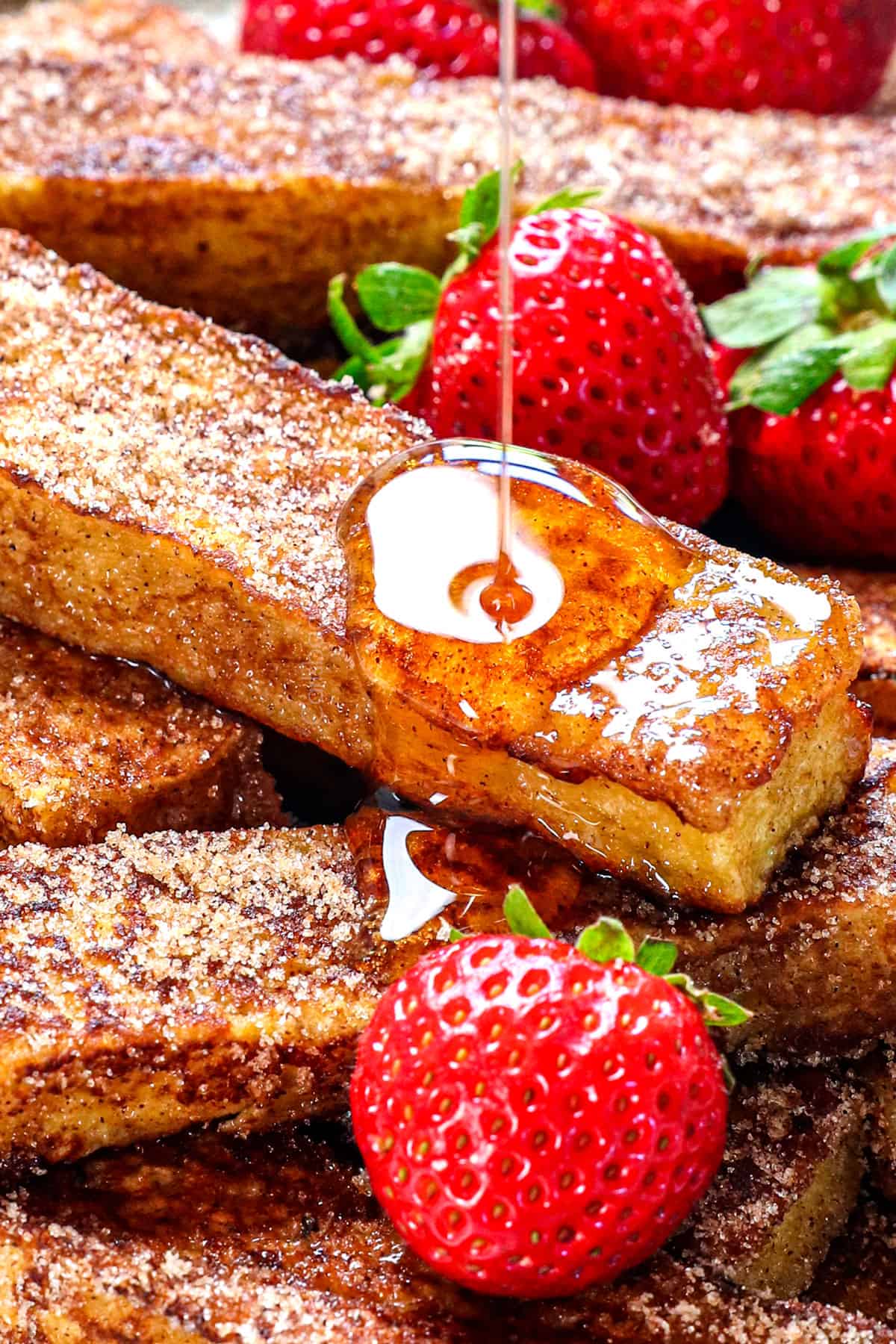
WANT TO TRY THIS FrEnch Toast Sticks RECIPE?
PIN IT to your recipe BOARD TO SAVE FOR LATER!
FIND ME ON PINTEREST FOR MORE GREAT RECIPES! I AM ALWAYS PINNING :)!
©Carlsbad Cravings by CarlsbadCravings.com
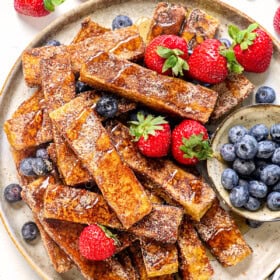
French Toast Sticks
Save This Recipe To Your Recipe Box
You can now create an account on our site and save your favorite recipes all in one place!
Ingredients
bread
- 8 slices 3/4-inch thick, stale bread-See Step 1 (brioche -my fav, challah or Texas Toast)
- butter and vegetable or coconut oil for cooking
Custard
- 1/4 cup flour (gluten-free is fine)
- 1/2 cup milk
- 4 eggs
- 2 tablespoons light brown sugar
- 2 teaspoons vanilla extract
- 1/4 teaspoon salt
- pinch of nutmeg
Cinnamon Sugar Coating
- 1/2 cup granulated sugar
- 1 1/2 tsps ground cinnamon
Optional Dippers
- maple syrup, peanut butter, or nut butter
- strawberry sauce
- blueberry sauce
- apple syrup
Instructions
- Prep Stale Bread: Remove the bread from the package and let it rest on the counter, uncovered, for one day. Alternatively, place a baking rack inside a baking sheet and arrange the bread in a single layer. Bake at 300°F 10-12 minutes, until the bread dries out. (The staler the bread, the stiffer the sticks/won’t be floppy.)
- Prep Oven: Preheat the oven to 200°F to warm the sticks between batches. Place a baking rack inside a baking sheet and place in the middle rack of the oven.
- Cinnamon and Sugar: Whisk together in a medium bowl (large enough to toss 4-6 French Toast Sticks in), then set aside.
- Cut Bread: Slice the crust off of the bread slices. Cut each slice into 3 equal thick batons (slice lengthwise; for me, this created 1-inch thick slices-see pics in post).
- Make Custard: Add the milk and flour to a shallow bowl and whisk until thoroughly blended. Whisk in the remaining custard ingredients (eggs, brown sugar, vanilla, salt, nutmeg).
- Prep Skillet: Melt one tablespoon of butter with one tablespoon of oil in a large nonstick skillet over medium heat.
- Batter Bread: Roll 4-6 sticks in the custard (do not soak them longer than 3 seconds, or they can become soggy), shake off the excess, and transfer to the HOT skillet.
- Cook: Cook until golden brown, turning to cook each side. Adjust the heat as needed to cook without burning. If your sticks are soggy (and you’ve used the correct, stale bread), you’re soaking the bread too long or not cooking long enough.
- Coat: Immediately transfer to the cinnamon and sugar and roll to coat (do this while they’re still warm, or the coating won’t stick).
- Keep Warm: Transfer the French Toast Sticks to the baking sheet in the oven to keep warm until ready to serve. Repeat until the custard or bread is gone, adding butter and oil as needed.
- Serve: Serve warm with maple syrup or desired dippers.
Notes
- Problem-Solving: Using fresh bread, thin bread, or sandwich bread, soaking for too long, not cooking long enough, or using too high heat can all lead to soggy French Toast Sticks. Also, don’t stack the cooked sticks; they will steam and become soggy.
- To Store: Let the sticks cool, then store them with parchment paper between each stacking layer. Refrigerate for up to 4 days.
- To Freeze: Let the French toast sticks cool completely once cooked. Place them in a single layer on a baking sheet to flash freeze for 1-2 hours, then transfer them to a freezer-safe bag or container. They’ll stay fresh for up to 2 months and can be reheated directly from frozen.
- To Reheat from Refrigerator: You can use an oven, toaster oven, air fryer, or microwave. For the crispest results, heat them in a 375°F oven or air fryer for 3-5 minutes. In the microwave, reheat for 1-2 minutes, but remember that they will be softer.
- To Reheat from Frozen: You can use an oven, toaster oven, air fryer, or microwave. Bake the frozen sticks for 8-10 minutes at 375°F, flipping them halfway through until golden and heated. Air fry at 350°F for 5-7 minutes, flipping them halfway, or microwave for 1-2 minutes, checking every 30 seconds for desired warmth (they won’t be crispy).

Did You Make This Recipe?
Tag @CarlsbadCravings and Use #CarlsbadCravngs
Leave a Review, I Always Love Hearing From You!

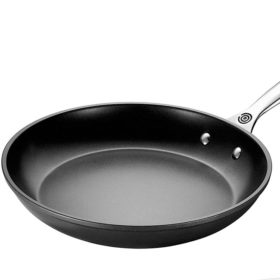
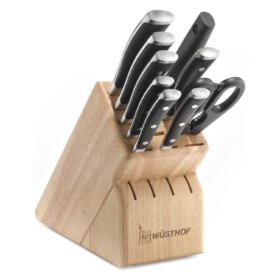
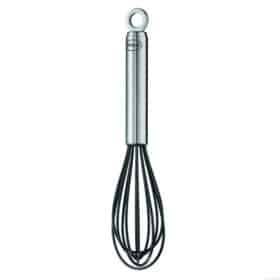
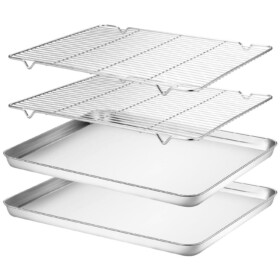

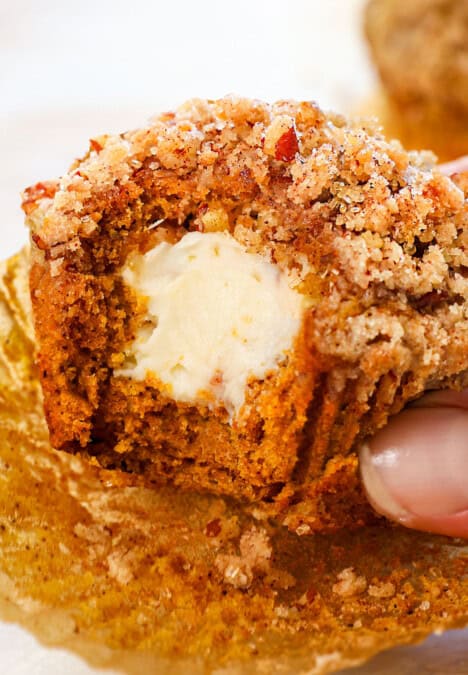
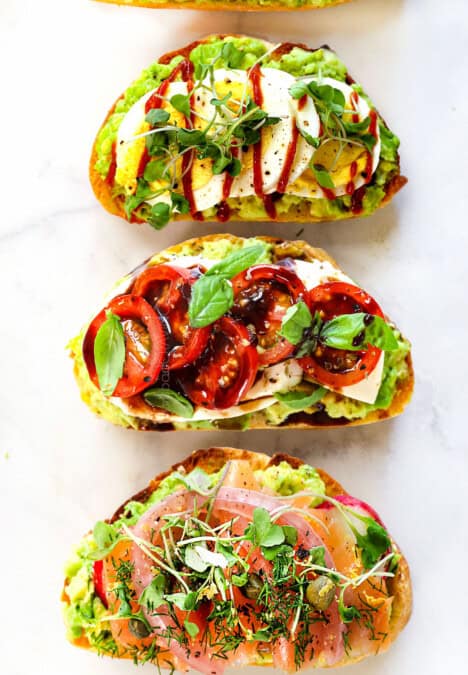

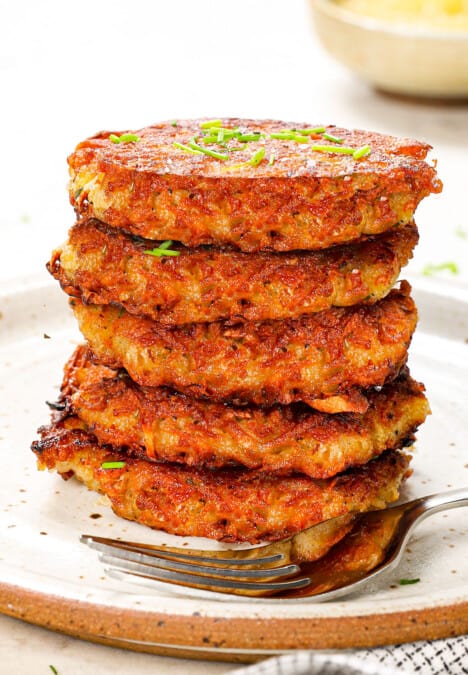
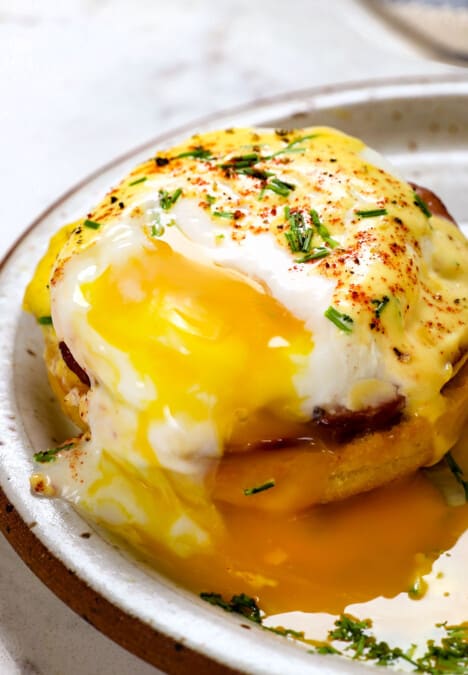
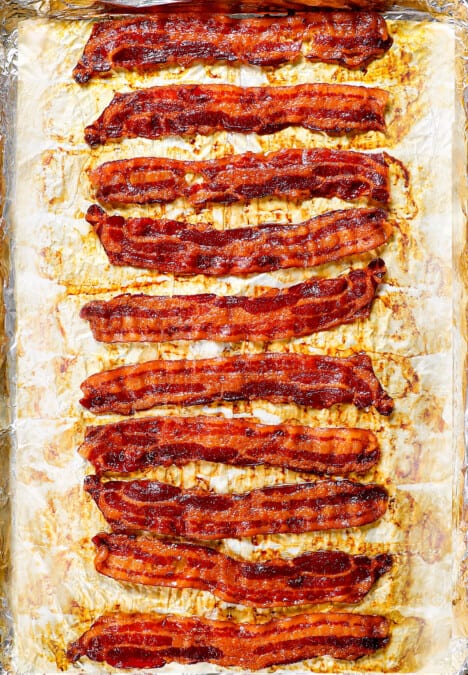























Amy says
This will sound bizarre but you can make them using orange juice instead of milk, add some vanilla. Fry them in 1/2 cup vegetable oil (it sounds like a lot of oil but it works!)
I always cc have orange juice on hand but milk, not often because I don’t like it.
Jen says
Hi Amy, I never would have thought to use orange juice. Sounds adventurous!